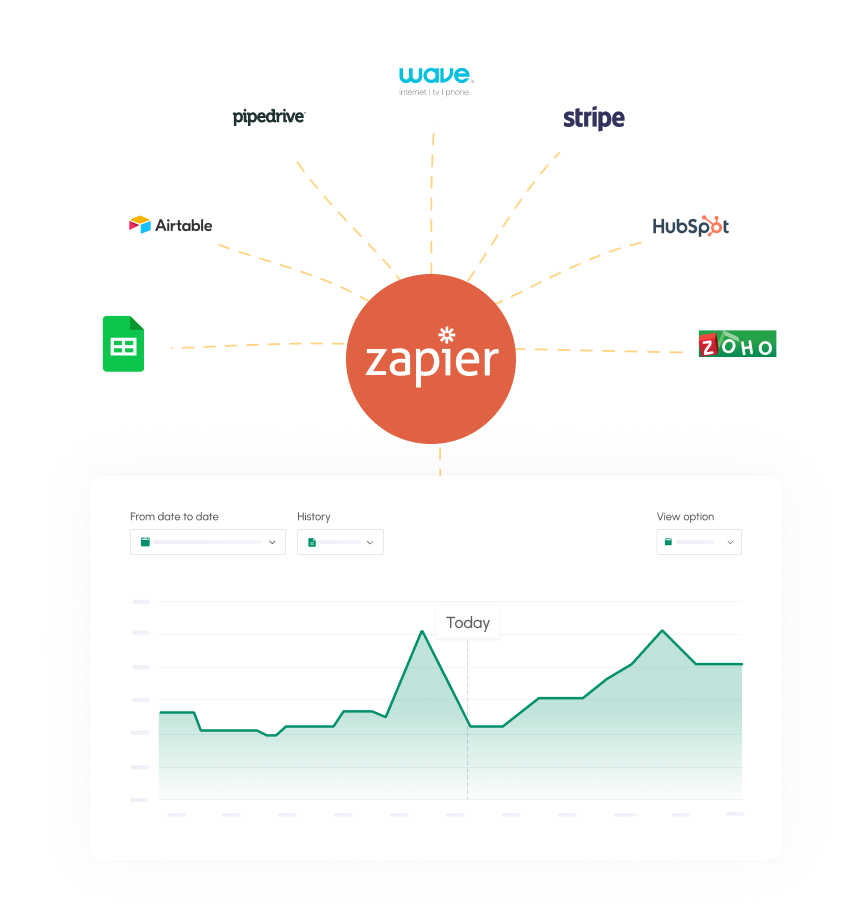
Businesses run on cash. The cash may be in your bank, but when it’s accessible, you can use it for anything from payroll to growing your business. Inflows and outflows occur daily, and if you’re wondering can net cash flow be negative, it most certainly can.
In this article, we’ll explain the following:
- What is a negative cash flow?
- What does negative cash flow mean?
- What is the consequence of having a negative cash flow?
What Is Positive and Negative Cash Flow?
There is positive and negative cash flow. However, before we define negative cash flow, let’s answer the question: what is positive cash flow?
Positive cash flow is simple: the business has more cash coming in than it does going out. On the other hand, negative cash flow means that a business is spending more money than it is receiving, putting the cash flow into the negative.
Is Negative Cash Flow Bad?
Yes and no. For example, negative monthly cash flow is bad over the long term because too much money is going out of a business and will lead to debt, late payments and other financial issues.
However, it’s not uncommon for a business that is expanding to have negative cash flow.
A lot of money is being funneled into expansion, so the business will have high outflows. Major corporations often run into issues where a new division of the business is running negative cash flows while the main business will subsidize the cost.
Seasonal businesses may also experience:- High cash inflows
- High cash outflows
For example, some businesses will earn 80% of their revenue during their peak season, which may only last for three months. The remaining months may have negative cash flow, but the revenue generated from the prior busy season is enough to sustain the business.
In business, some months have better cash flow than others.
With that said, it’s not ideal to have chronic negative cash flow unless you’re going through expansion. If negative cash flow is chronic, it may mean that there’s a systematic failure in the business, and this must be addressed immediately.
How?
Identify the reasons for negative cash flow and address them accordingly.

Reasons for Negative Cash Flow
Without going through your books, it’s impossible to know the exact reason for your negative cash flow. However, the most common reasons that a business will run into the negative include:
Low Profit Margins
Profit margins may be too low. Your profit margin is how much you earn after considering all of the costs of a product. For example, if you’re running a restaurant, the cost of a pasta dish may be $8.
Of course, the ingredients are negligible and small in comparison to the product’s cost.
However, you also need to consider the cost of the waitstaff, chef, utilities and other overhead that go into making the dish.
Low Profits
Low profits are different from low profit margins, but they are intrinsically linked to one another. If you have too low of profits, you’re overspending, which can be anything from overstocking, investing or simply lack of business.
Investing Too Much
Wants and needs are different in business as they are in real life. Often, businesses will invest too much without justification. You may be investing too much in:
- Inventory
- New equipment
- Building renovations or expansion
- Etc.
Overstocking
Overstocking is one of the areas where businesses tend to tie up their money for too long. For example, a business may decide to buy 1,000 widgets to receive a bulk discount, but when the product remains on the shelves for too long, it holds the money up so that it cannot be used in other ways.
Rapid Expansion
Expanding business operations is costly, but it’s a necessity for some businesses. If you’re growing the business too quickly, you can expect to have negative cash flow. There are a few ways to handle the cash flow issue at this point:
- Create a plan for the expansion
- Forecast the expansion and when you’ll earn money
- Secure capital to pay for the overhead during the business’s expansion
Uncontrolled Spending
Finally, uncontrolled spending also leads to the effect of negative cash flow. You'll want to curtail spending by tracking every expenditure and adjusting purchasing habits to get your spending under control.
How Does Negative Cash Flow Affect Your Business?
Negative cash flow will impact your business in many ways, including:
- Reducing expenditures is a necessity, and you may need to cut back on costs, such as:
- Cutting staff to reduce overhead
- Eliminate products that are not selling well
- Shuttering certain business divisions
- Etc.
- Growth is not possible with negative cash flow unless outside debt is taken on
- If the business is to operate on negative cash flow for the long-term, you’ll need to secure capital to cover expenses until profitability is met
- Prices for products or services with low profit margins will need to be revamped and changed to ensure that the business can be profitable
Difficult business decisions must be made if you have negative cash flow. For example, you may need to cut staff to lower your outgoings or even spend time revamping your business model to reduce the risk of long-term unprofitability.
Negative cash flow is difficult to deal with at first, but you can learn to manage your negative cash flow.

Managing Negative Cash Flow
If you have negative cash flow, you first need to learn to manage it and then work on improving the cash flow. Management is possible by taking the following steps:
- Reduce expenses. First, take a look at your expenses and what you can do to reduce them. The first step is to itemize your expenses and then see which expenses you can begin cutting back on.
- Financing. If the business projects short-term cash flow problems, financing is an option.
- Vendor terms. You may be able to negotiate better terms with your vendors, allowing you to pay a few weeks or months later to satisfy your debt. You may also be able to negotiate discounts.
Managing negative cash flow is possible, but you also need to find ways to improve it.
How To Improve Cash Flow and Start Growing?
Managing cash flow is a short-term solution, but you’ll also need to work towards improving your cash flow.How?
There are quite a few ways to improve your cash flow:
- Increase the cost of guides and services
- Reduce your expenditures
- Require faster payments from customers
- Run credit checks on customers
- Negotiate better deals with suppliers or find new ones
You can improve cash flow in many ways, but the best way is to reduce debt and increase profit margins. In the future, you can then expand into new markets to earn more revenue.
Manage Your Cash Flow Effectively with the Cash Flow Frog App
Cash Flow Frog will help you manage your cash flow in new, exciting ways. The app provides real-time, updated cash flow statements. You can also run cash flow projections using the standard 13-week forecast or any period of time that you would like.
If you’re expanding, you can also create what-if scenarios that empower you to know what a new product launch may look like.
You can try Cash Flow Frog for free to learn how the app works and if it’s a good fit for your business or not.
Related posts:
You may be interested:
New:










